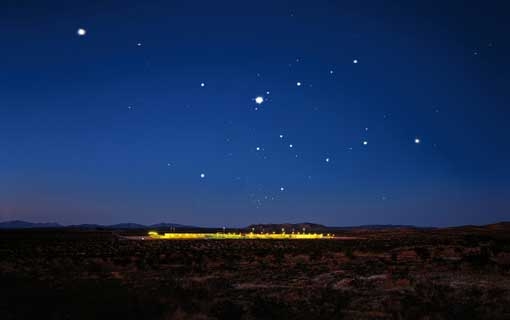The Whole Earth is a hugely ambitious show inspecting the impact of the famous NASA image of our big blue world and how it coloured the California counterculture’s highly influential musings on politics, the environment, cybernetics and art. We face a text-heavy display that takes hours to digest. As with launch countdown at a late critical juncture, surrounded by all the facts and technology, guidance is internal and you’re on your own.
They see the meaning of the earth image as a reversal of gaze: not outward as a door to space as the final frontier, but now, paradoxically,driving us inward
Curated by Diedrich Diederichsen and Anselm Franke, this is a book of ideas that, in an overt literary move, consists of seven chapters. We begin with ‘Universalism’ – earth as one interconnected system, James Lovelock’s Gaia hypothesis, etc. Stewart Brand’s Whole Earth Catalog from 1968 harped on about a new connectedness, but the curators here do not ‘seek to repeat the old narrative of the sold-out, failed counterculture’. And so next we enter ‘Frontier: At the Pacific Wall’, where the curators posit (creakily) that after the NASA photo you could no longer break on through to the other side because geographically there was no outside there any more. They see the meaning of the earth image as a reversal of gaze: not outward as a door to space as the final frontier, but now, paradoxically,driving us inward.‘Whole Systems’ follows with some welcome comic relief: TV footage of MIT guru Jay Forrester calling himself an optimist. Here he is, unwittingly hilarious, talking with Adam Curtis: “Our problem is the hard problem.” “And that hard problem was?” “The world.” More-intentional giggles arrive via Nancy
Holt and Robert Smithson’s East Coast, West Coast (1969), where Smithson parodies California dippiness and remains remarkably deadpan while saying guff like, “I’m a friend of Chief Soaring Eagle’s son.” And then we are back in the black hole that is ‘Apocalypse, Babylon, Simulation’, with the curators presenting a counterargument to the Age of Aquarius. To quote them, ‘the whole as false – a system, a life form condemned to destruction’. Enter Raymond Pettibon, with his drawing O. D. a Hippie/Legalize Heroin. Ban Hippies (and New Yorkers) (1982). For the next chapter, ‘Boundless Interior’, read navel-gazing and Andy Warhol’s Outer and Inner Space (1965), the double-screen projection of arch-narcissist Edie Sedgwick chatting with herself on TV, a prototype of the selfie. This leads to ‘Self Incorporated’, aptly illustrated by Ashley Bickerton’s wall-mounted leather-clad construction Commercial Piece #1 (1989). ‘The Earth Is Not Whole’ concludes the exhibition with the curators wondering if ‘the whole earth has turned into a malicious, hopelessly divided middle class that is doomed to perish’. Cheers!
Diederichsen, like his British pop-cultural counterpart Paul Morley, suffers from an intellectual horror vacui. Maybe this show is an example of ‘outsider curatorship’. The hall resembles those endless poster displays beloved of international academic conferences mounted on cheap plastic boards with no obvious directional strategy. This near-manic lack of coherence may deliberately mimic random Google-search wanderings but it doesn’t necessarily persuade one that there is a novel underlying thesis, aside from the beloved ‘everything connects’ of Charles Eames or Leonardo da Vinci. There’s much too much tangential stuff here, scads of tomes, from the Tibetan Book of the Dead to books by biologist Barry Commoner. And music, too: album covers a-go-go and way too much Jefferson Airplane. Sun Ra? Why not? The net effect is to reduce the artworks to just more human stuff used to prop up a loose argument rather than letting them speak for themselves. Some contemplative gaps would have helped. After all, space is the place.
This review originally appeared in the September 2013 issue.
